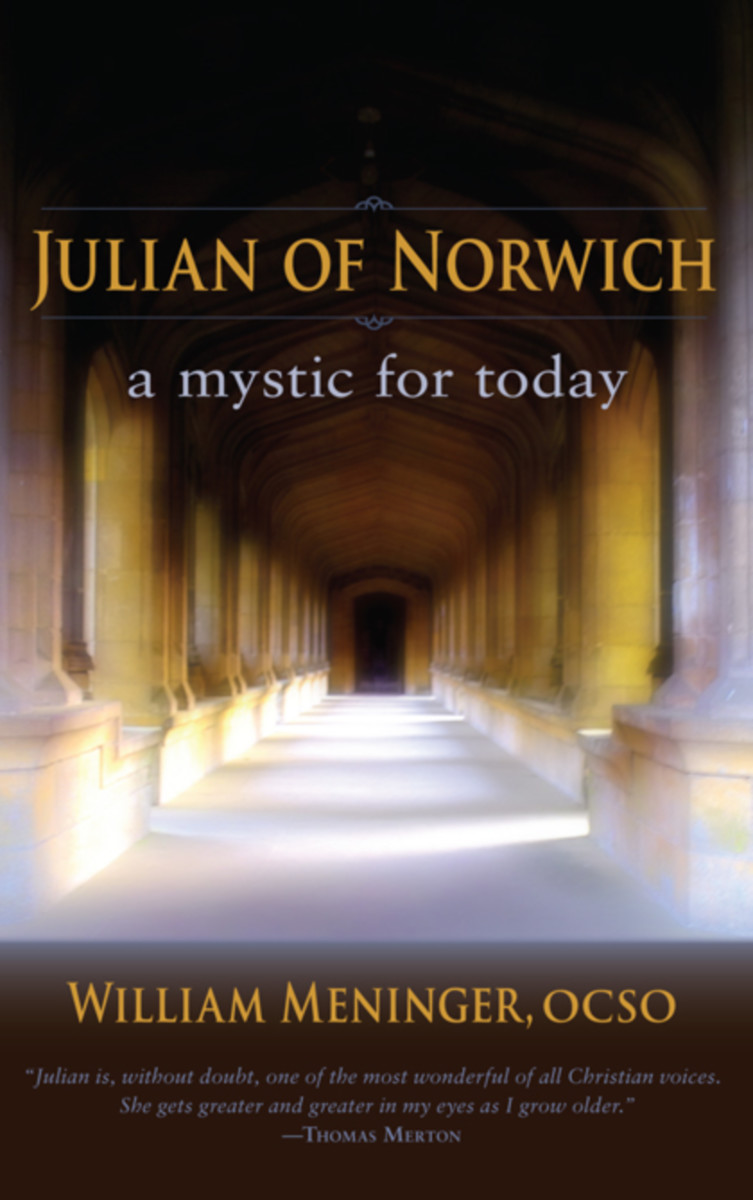Julian of Norwich
A Mystic for Today
- Publisher
Lindisfarne Books - Published
2nd August 2010 - ISBN 9781584200888
- Language English
- Pages 118 pp.
“Julian is, without doubt, one of the most wonderful of all Christian voices. She gets greater and greater in my eyes as I grow older.” — Thomas Merton
Other than what is contained in her singular work, Showings of Divine Love, we know almost nothing of the personal life of Julian. We do, however, know something about her background, as a recluse, or anchoress, and the social, cultural, and political life of late-fourteenth-century England.
Although nothing of it is mentioned in her Showings, the times in which Julian lived were fraught with political, social, and economic upheavals in both Church and state. There are, indeed, many parallels to the present age. This, in part, helps to explain why Julian speaks so loudly to today after six hundred years of silence.
On the thirteenth of May, 1373, Julian received a series of sixteen visions centered on the person and sufferings of Jesus and on the Trinity. A short time later, she wrote an account of them in twenty-five chapters (known as the “Short Text”). Twenty years later, after much prayer and reflection, she wrote another account consisting of eighty-six chapters (called the “Long Text”). During this important interim, Julian the visionary became Julian the theologian.
Julian’s visions correspond to the classic understanding of such phenomena. Some visions were spiritual locutions. In this experience, God spoke directly to her heart in such a way as to communicate with absolute, unquestioned clarity the desired message. Actual words were probably not used but the visionary was left with no doubt as to the authenticity or the meaning of the message. Other visions were visual or experienced as coming through the corporeal senses. These resulted from the direct action of God on the imagination. Still others were spiritual visions, not easily expressed and usually concerned with the deeper mysteries of God, such as the Trinity. Many of Julian’s visions were combinations of all three types.
This book is not a translation or paraphrase of Julian’s Showings of Divine Love. Rather, it is a commentary—in 86 brief, meditative chapters—intended to provide information, reflections, and further theological understanding that will enhance the modern Christian’s reading of Julian’s book. It can be read independently, prior to reading Julian’s book, or along with it, chapter by chapter.
C O N T E N T S:
Author’s Note
Introduction
1. Sixteen Visions
2. Three Gifts and Three Wounds
3. Mortal Illness
4. The First Vision
5 The Hazelnut
6. Intermediaries in Prayer
7. God Is Most Courteous
8. Not for Julian
9. Love Unites All
10. God in Man’s Image
11. No Sin
12. The Fourth Revelation
13. The Fifth Revelation
14. The Sixth Revelation
15. The Seventh Revelation
16. The Eighth Revelation
17. The Holy Thirst
18. United in the Passion
19. The Cross Is the Way
20. Spirit Strengthens the Flesh
21. The Ninth Revelation
22. Three Heavens
23. Joy, Bliss, and Delight
24. The Tenth Revelation
25. The Eleventh Revelation
26. The Twelfth Revelation: I Am
27. The Thirteenth Revelation
28. United with Christ
29. Not Convinced
30. Two Understandings
31. All Things Well
32. A Secret Act
33. More on Faith
34. Two Mysteries
35. The Best of All Possible Worlds
36. Another Deed
37. Sin and the Godly
38. From Sin to Glory
39. Do Not Despair
40. God Loves Us Even in Sin
41. The Fourteenth Revelation
42. How We Should Pray
43. Contemplative Prayer
44. Truth, Wisdom, and Love
45. Two Judgments
46. Knowing Ourselves
47. The Cause of Sin
48. Mercy and Grace Are the Answers
49. Grounded in Peace
50. Continued Perplexity
51. The Lord and the Servant
52. God Is with Us
53. God Assigns No Blame
54. God in Us, We in God
55. Christ Is Our Way
56. Knowledge of the Soul
57. Higher and Lower Parts
58. Father, Mother, Spouse
59. Trinity and Mother
60. God as Mother
61. We Need to Fall
62. By Nature and by Grace
63. Nature Saved by Grace
64. The Fifteenth Revelation
65. Reverence and Humility
66. A Visitor
67. The Dream
68. The Sixteenth Revelation
69. Reassurance in Truth
70. Another Temptation
71. Steadfast Faith
72. The Face of God
73. Sloth and Fear
74. Four Kinds of Dread
75. Three Needs
76. The Loving Soul and Sin
77. Laughing Greatly
78. Knowledge of Four Things
79. Sin Is Inevitable
80. Jesus Does Everything
81. Christ in Our Soul
82. With Pity, Not with Blame
83. Faith Is Our Light
84. The Light Is Also Love
85. All Is Well
86. Not Yet Finished
Select Bibiography
William Meninger
Fr. William Meninger, OCSO, entered St. Joseph’s Abbey in Spencer, Massachusetts, in 1963. While there, he developed a contemplative prayer method based on the fourteenth-century classic The Cloud of Unknowing, leading to a prayer method called Centering Prayer. Fr. William moved from St. Joseph’s Abbey to St. Benedict’s Monastery in Snowmass, Colorado, in 1979, where he has served as prior and novice director. His books include The Loving Search for God: Contemplative Prayer and the Cloud of Unknowing and Bringing “The Imitation of Christ” into the Twenty-First Century. Most recently he contributed to Sundays at the Magic Monastery: Homilies from the Trappists of St. Benedict’s Monastery and to St. Benedict's Monastery.


